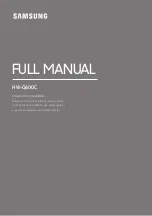
– 9 –
How User Access Codes Affect the Common Area
Codes with "Global" Arming
If a code is given "global arming" when it is defined (see Section 24: SECURITY ACCESS
CODES), the keypad will ask "Arm all?" or "Disarm all?" whenever the user tries to arm or
disarm the partitions he has access to from a keypad. This allows the user to pick and
choose the partitions to be armed or disarmed, and so eliminates the "automatic" operation of
the common area. Keep in mind, however, that if attempting to arm all, and another
"affecting" partition is disarmed, the user will not be able to arm the common area, and the
message "UNABLE TO ARM COMMON AREA PART" will be displayed.
Codes with "Non-Global" Arming
If arming with a non-global code, the common area partition operation will be automatic, as
described by fields 1*12, 1*15, 1*18 and 1*13, 1*16, 1*19.
Other Methods of Arming/Disarming
When arming or disarming a partition that affects and/or arms the common area in one of
the following manners, common area logic remains active:
•
Quick-Arm
•
Keyswitch
•
Wireless Button
•
Wireless Keypad
Arming/Disarming Remotely
If arming or disarming remotely (through V-LINK downloading software), the common area
will not automatically follow another partition that is programmed to arm or disarm the
common area. The common area must be armed separately, after arming all affecting
partitions first.
Auto-Arming/Disarming
If scheduling is used to automatically arm and/or disarm partitions, the common area
partition will not automatically follow another partition that is programmed to arm or
disarm the common area. The common area must be included as a partition to be
armed/disarmed.
If using auto-arming, make sure that the Auto-arm Delay and Auto-arm Warning
periods (fields 2*05 and 2*06) combined are longer than that of any other partition
that affects the common area. This will cause the common area to arm last.
















































